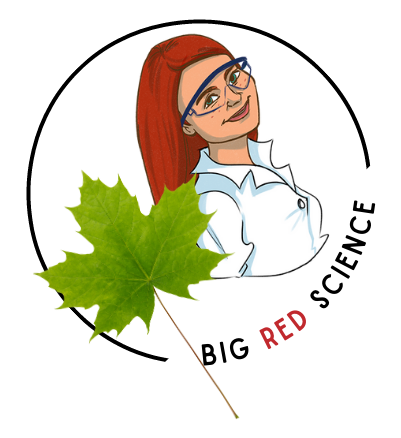Up the Engagement in Your Genetic Processes Unit for SBI3U (Gr. 11 Biology)
The “Genetics Processes” unit in Gr. 11 Biology (SBI3U) is THE unit of THE course that officially inspired my degree in Molecular Biology and Genetics. Once students get a handle on allllll the new vocabulary, this unit is easy to love!
The activities below are some of my faves to include each year
(*Note: the case studies mentioned here can be accessed through an NSTA membership. There is an option for a free account, but I believe you’re limited as to how much you can access each month)
Are you an ONTARIO SCIENCE TEACHER?
Me too! Click here if you’d like some specific science content that’s aligned to the Ontario curriculum, Growing Success, and all that as, of, for jazz that we know and love! (I promise you won’t be overloaded with emails!)
1) Hypertrichosis Case Study
I start the unit with a case study about a family with hypertrichosis (see photo below). Students are immediately drawn into the true story about the Gomez brothers are and fascinated to learn about how this occurs. This lesson is a great hook and overview of genetic concepts + I have a companion slide deck that introduces students to the common vocabulary (i.e. gene, allele, chromosome, phenotype, genotype etc.).

2) “Hemophilia: A Royal Disease” Pedigree Case Study
An excellent case study for exploring genetic pedigrees as well as an X-linked recessive disorder. Students analyze the true pedigree of the British monarchy and learn that hemophilia popped up in Queen Victoria’s children.
Guiding questions lead students through the generations and has them making Punnett squares along the way to explore different scenarios.
A very interesting connection between science and history! (Bonus: you can talk about hemophilia again when exploring blood and the circulatory system in the Body Systems unit!)

3) Socratic Seminar
I adapted a product that I purchased from TpT from The Biology Blend and have students research and form opinions about the question:
“Manipulating genes sounds bad, right? How bad is it, really?”
Students then read a whole-class article and find at least 2 other sources to research. They develop a position on the extent to which they believe humans should manipulate the genetics of the world around them and eventually participate in a roundtable discussion.
Students always bring forth interesting research surrounding controversial topics and are also encouraged to bring others into the conversation. It really challenges some students to step out of their comfort zones while other students have expressed relief at having an assessment that’s not a test.

4) GATTACA
This movie is pretty old at this point, but students still love it! I show it before the socratic seminar is introduced to help students envision a “what if?” scenario of genetic manipulation. It leads to some good discussion as well as some cheesy moments.

5) Interactive Karyotype Bulletin Board
Who doesn’t love an interactive bulletin board? You set this huge karyotype up with velcro dots and students can order them from #1-22 (largest to smallest) + X and Y and match each homologous pair based on their banding patterns. This can come in handy when talking about chromosomes, genes, and alleles, and you can also use it to keep their hands busy, initiate discussion, and preview or review genetics content.
.png/:/cr=t:0%25,l:0%25,w:100%25,h:100%25/rs=w:1280)
6) Meiosis…
I wish that I had a sure-fire trick for teaching meiosis, but the truth is I haven’t found it yet.
Students can easily get confused, especially if you get overly concerned with the details. So while I don’t have a true favourite activity here, I have some tips:
1) Focus on what’s important:
- Meiosis only occurs in the cells that will eventually become sperm and eggs
- There are two rounds of cell division
- 1 diploid cell → 4 haploid cells
- The process increases genetic diversity via crossing over (recombination) and independent assortment
2) Use a good animation and narrate the process. Have students repeat it to a partner referring to a diagram.
3) There is a nice opportunity for a conversation assessment with this topic! It can help to ensure students understand what’s really important and not get bogged down in the details!
7) Karyotype stations for non-disjunction
I find non-disjunction helps to anchor meiosis. Students find it naturally interesting when it’s presented in the context of trisomies and monosomies that they’re familiar with (i.e. Down Syndrome, Klinefelter’s, Turner’s Syndrome, etc.). After a quick lesson on how non-disjunction occurs, I set up stations based on karyotypes that each show a different trisomy or monosomy. Students then conduct some research to complete their note.

What do you think? Do you use any of these activities in your genetics classes? Do you have others that are tried and true? I’d love to hear about it!
Send me an email at bigredscience@gmail.com or DM me on Instagram @bigredscience to share!
Scientifically Yours,
Mo
Looking for other teaching ideas? Check out:
Exploring Diversity of Living Things with 6 Creative Activities
Engage Students in Classification with…Fecal Transplants!?
5 Easy Ongoing Science Activities to Engage Students All Year
3 Easy Ways to Bring Your Science Classes Outside
What You Need To Do ON Lab Day To Ensure Things Run Smoothly
What You Need To Do BEFORE Lab Day To Ensure Things Run Smoothly
Low-Pressure Icebreakers for the Science Classroom
7 Super Helpful Tips for New Science Teachers
The #1 Thing Teachers Wish They Learned in Teachers College
How to Guarantee that Your Students Will Remember What They Learn
The Proven Blueprint to Using Movies in the Science Classroom



